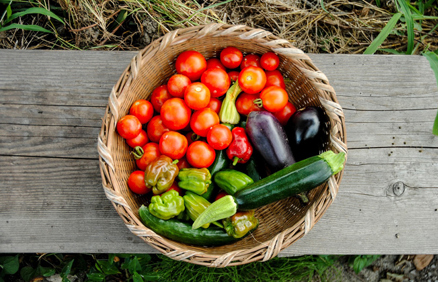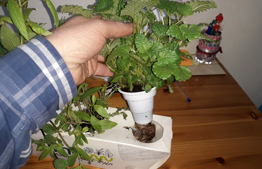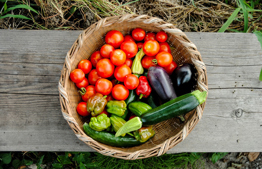Preparing for 5779: a ma’aser sheni year

The year 5779 is a ma’aser sheni year, and is the fourth year of the shemita cycle. As such, there are different halachot that pertain to terumot and ma’aserot than those from last year.
The year 5779 is a ma’aser sheni year and it is the fourth year in the shemitah cycle, between the last shemitah year (5775) and the coming shemitah year (5782). As a ma’aser sheni year, some of the halachot pertaining to terumot and ma’aserot are different than last year. Note that the points below are explained so we can understand the issues at hand. Using the formula of the Torah VeHa’aretz Institute (the text appears on our magnet here and is provided to Beit HaOtzar members) covers all years of the shemitah cycle, as explained below.
Vegetables Harvested in 5779
- Vegetables harvested in fields or vegetable patches in home gardens following Rosh Hashanah 5779: When we know that terumot and ma’aserot have not yet been taken, one should separate terumot and ma’aserot with the blessing “ברוך אתה ה'... להפריש תרומות ומעשרות.” Following the formula for separating ma’aser rishon, we say another blessing on taking ma’aser sheni: "ברוך אתה ה' ... לפדות מעשר שני.” Then we proceed to say the rest of the text for transferring the sanctity of ma’aser sheni onto a designated coin.
- When the vegetables are from various sources where there is a doubt whether terumot and ma’aserot have been separated: This issue is relevant also when we buy groceries from the open market or stores without rabbinical supervision. In such cases, one should recite the text for separating terumot and ma’aserot without a blessing, and transfer the sanctity of ma’aser sheni to a coin without a blessing, as well. The possibility of saying the formula for separating terumot and ma’aserot without a blessing is noted in the text put out by the Torah VeHa’aretz Institute.
- When buying hard vegetables in the marketplace (potatoes, carrots, sweet potatoes, pumpkin): In early winter, it is highly likely that they are from the previous year’s harvest. In light of this, it is preferable to use the formula on our magnet in full, which takes care of both ma’aser sheni and ma’aser ani in cases of doubt, and the sanctity of ma’aser sheni is transferred onto a coin without a blessing.
Fruit Harvested in 5779
- Fruit that began to grow (bloom) between Tu BiShevat of 5778 and Tu BiShevat of 5779: This fruit is still halachically considered the fruit of 5778, and requires a separation of ma’aser ani. In practice, this relates to the fruit that will be harvested from private gardens and farmers in large orchards this coming winter (such as citrus fruit and avocados). This fruit still requires the separation of ma’aser ani, and the laws of ma’aser sheni do not yet apply.
For such winter fruit sold in the marketplace where there is a doubt whether terumot and ma’aserot were taken, terumot and ma’aserot are taken without a blessing. These are still considered ma’aser ani fruit.
- Fruit that bloomed in private gardens after Tu BiShevat 5779 and will be harvested in the summer of 5779: The laws of ma’aser sheni definitely apply to these fruit. Terumot and ma’aserot and taken with a blessing, and their sanctity is transferred onto a coin with a blessing
- Citrus fruit harvested in private gardens or bought in the marketplace following Tu BiShevat 5779: For such fruit it is preferable to say at the end of the separation: “ … the produce is ma’aser sheni, and if the year requires ma’aser ani, it is ma’aser ani.” And then: “What I have designated as ma’aser sheni and a quarter of its value is now redeemed by transferring its sanctity to … my designated coin.
- Summer fruit sold in the marketplace: Terumot and ma’aserot are taken without a blessing, and the formula for redeeming ma’aser sheni is said without a blessing.
- Whenever there is the slightest doubt as to which year the fruit belong to, it is possible to say the formula of the Torah VeHa’aretz Institute in full, which includes transferring the sanctity of ma’aser sheni onto a coin without a blessing.
- Members of Torah VeHa’aretz Institute’s Beit HaOtzar Fund do not need to designate a coin to transfer the sanctity of the ma’aser sheni. This is because when members state that they are transferring the sanctity of the ma’aser sheni onto “my designated coin,” the ma’aser sheni in the fruits and vegetables are redeemed onto one of the Beit HaOtzar coins designated for that very purpose. These coins are specially designated on a daily basis by the head of the Beit HaOtzar to enable members to transfer the sanctity of their ma’aser sheni every day. see here for more information about Beit HaOtzar.




